Memories of a confection so pure and ethereal are amongst the fondest of my childhood. Great Auntie Touriel made the ultimate delicately formed, feathery textured masapan. Masapan has always been reserved for life’s most important occasions such as weddings,engagements, and Brit Mila (covenant party for new born boys). It was served elegantly with little silver dragees on top for decoration. I don’t think you can find silver dragees any longer.
Masapan or Marzipan is sophisticated and not too sweet, created from only almonds, sugar, and water. I say created, not made, because it is magic when such simple ingredients combine to become more than the sum of their total.
Great Auntie Touriel passed away many years ago, but I found a friend’s mother who made it as close as I could conceive. I made an appointment with her to measure, observe, and get my hands dirty. I have to admit that this year after many tasty but not quite right in texture attempts, my masapan finally came out right. I am including just a few pieces in my Purim Platicos or Mishloach Manot for this year’s Purim celebration.
You will need a large heavy bottomed pot, a food processor with a sharp blade, and a candy thermometer.
6 cups whole raw almonds
3 cups sugar
4 cups water
Silver dragees for decoration (optional)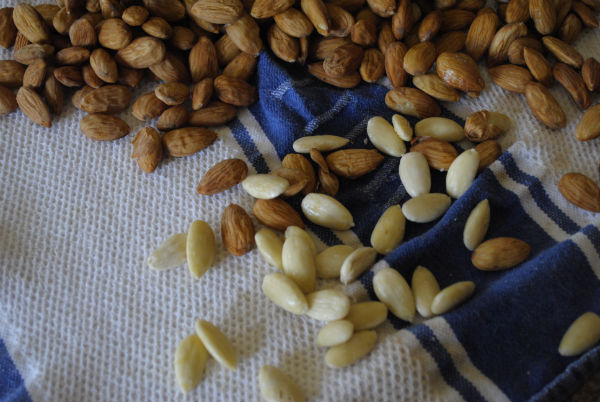
Bring a 7-8 quart heavy bottom stockpot filled with cold water to boil. Place the almonds in the boiling water for 1 to 2 minutes. Remove the stockpot from the stove and drain the water from the almonds. Pour the almonds out onto clean tea towels. Remove the skins of the almonds one at a time by hand. You can rub them in a clean towel to get the process started. Set the almonds aside on dry towels to dry. You need to do this step; masapan does not taste the same if you start with purchased blanched almonds. This is definitely a time consuming labor of love.
While the almonds are drying, clean and dry the stockpot. Combine the sugar and water in the pot and turn the heat on medium. Bring the syrup to a boil WITHOUT stirring. Continue boiling until a candy thermometer dipped in the middle of syrup, without touching pan, registers 232°F. If you don’t own a candy thermometer, you can take a spoon of syrup and dunk it in a 2 cup measure or glass filled with cold water. If strings of syrup form, it is ready. Alternatively, touch your index finger to the spoon and then place your index finger and thumb together, when you separate them the syrup should feel thick, sticky, and form a thread as you separate your fingers.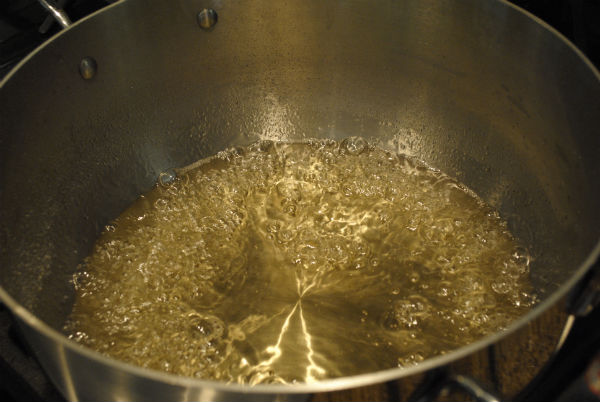
While you are waiting for the syrup to reach the right temperature, transfer the dry almonds to a food processor, and process using pulses until very finely ground and beginning to stick together. When the syrup reaches the right temperature, transfer all the ground almonds into the stockpot. Lower the temperature to the lowest setting, stir with a wooden spoon to combine, and continue stirring until the mixture is dry and coming away from the sides of the pan without coloring at all. Remove the stockpot from the stove and place it in an ice bath. As the masapan cools, prepare a small bowl of cold water to keep your hands wet and a clean place to knead the masapan, like dough. I use a large Silpat; this surface makes for easy kneading and no sticking to the surface.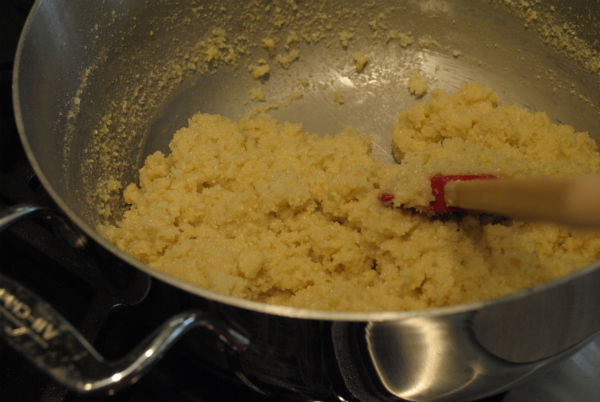
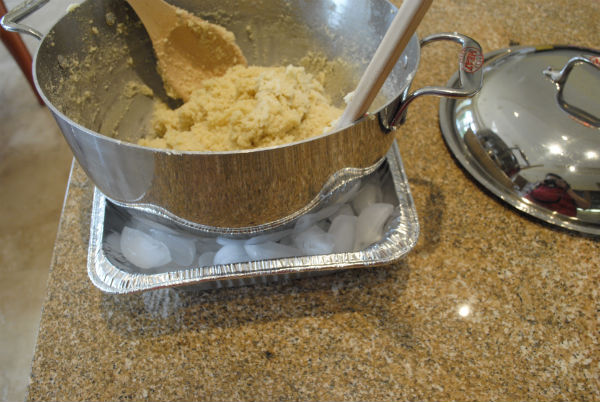
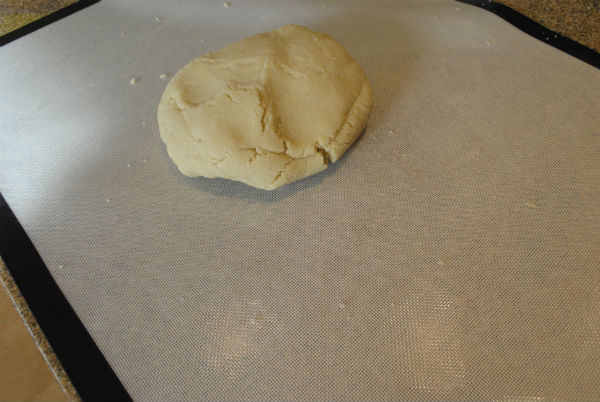
When the masapan is cool barely enough to touch, scoop it out of the pan onto your kneading surface. Knead with moist hands until it comes together becoming more pliable and smooth as you go. After kneading, form the masapan dough into a disc and cut the disc into four pieces. Wrap three pieces in plastic wrap until you are ready to use it. This keeps the dough from drying out. Starting with the fourth piece that is not wrapped, split it into three pieces and start to roll out a long thin log about ¾ of an inch in diameter with flat ends. Cut pieces on a diagonal and carefully set aside into your storage container. Store in an airtight container until you use it. You can freeze them.
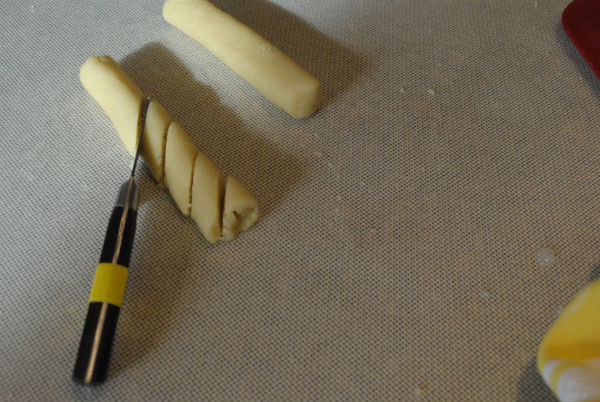

Masapan dough is useable in other recipes. You can break off little pieces and stuff it into pitted Medjool dates. Once on a trip to Panama for a friend’s son Bar Mitzvah I tasted a fantastic multi layered roll containing one layer of masapan, one layer of pistachio masapan, 1 layer of ground apricots all covered in dark chocolate. Sliced into multicolored pinwheels it was elegant and delicious. Wow! My Panama friend tells me the custom is to shape the multi flavored log into the shape of the bride and groom or Bar Mitzvah boy’s initials.
I sincerely hope that we who like to cook will be the Great Auntie Touriels of the future, providing that continuity from generation to generation and wonderful childhood memories.
Make a large batch and serve it tray passed or on a dessert buffet at some wonderful celebration. You can put it in individual foil confection papers if you like.
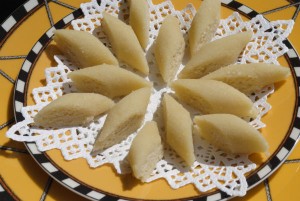

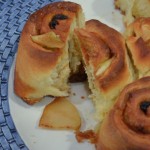
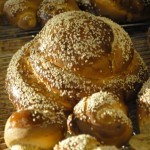

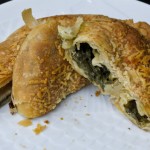

Wow, Linda, the masapan looks amazing! I can tell you have perfected the recipe.
Reading about the layered masapan reminded me of the kind my mom makes. She makes a batch of masapan every Passover and for an even fancier presentation, she adds rose water to the masapan and rolls two pieces into about 1/4 inch thick and 10 inches in diameter, spreads kaymak (a Turkish cream that’s commonly enjoyed with baklava and other syrupy desserts) and places the second piece of masapan on top, then cuts like you would cut baklava.